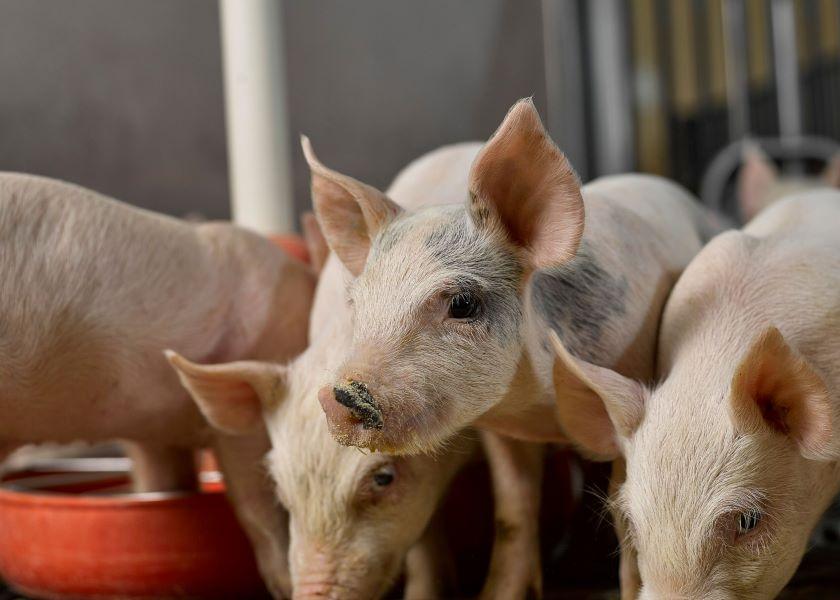Oregon State University (OSU) has been awarded a $50 million grant from the U.S. Department of...
Pork Industry Now Contributes $57 Billion to U.S. GDP

Did you know that more than 66,000 U.S. pig farms sold more than 140 million hogs in 2021 worth over $28 billion in gross cash receipts? A new economic report from the National Pork Producers Council (NPPC) highlights how America’s pig farmers are significant contributors to the agriculture and overall economy of the U.S. Looking at the past five years, the report highlights pork industry value chain contributions and growth.
“From farm to fork, the combined economic contribution from hog production and pork processing supports more than 600,000 American jobs and generates $178 billion of direct, indirect and induced sales that equates to $57 billion in value-added GDP,” Holly Cook, NPPC staff economist, said in a release.
Terry Wolters, NPPC President and owner of Stoney Creek Farms in Pipestone, Minnesota, said he is proud to see the impact he can have by being part of a thriving U.S. pork industry. “It’s vital to share this economic snapshot as America’s pork producers continue to engage with regulators and policymakers, food companies and others to convey how our businesses directly and indirectly impact the larger economy,” Wolters said.
Below are four key takeaways from the study:
- The pork industry supports direct and indirect jobs in the U.S.
An estimated 613,823 U.S. jobs are involved in various aspects of the pork value chain — ranging from input suppliers to producers to processors and handlers, as well as main street businesses that benefit from purchases by people in these industries. Overall, an estimated $35.86 billion of personal income and $57.20 billion of gross national product are supported by the U.S. pork industry based on 2021 levels of production. It also boosts economic activity in related services, such as trucking, grain elevators, insurance and other rural-based businesses. - The number of U.S. pig farms has grown since 2012.
Total hog marketing in the U.S. has increased in recent years along with the number of farms raising hogs. Although the number of farms with hogs decreased from 124,889 to 63,246 from 1997 to 2012, by 2017 the number of farms increased to 66,439. Meanwhile, the average inventory of hogs per farm has increased from 490 to 1,089. About 7% of U.S. hogs are on farms with less than 2,000 head in inventory, 20% of the inventory is on farms with 2,000 to 4,999 head, and 73% are on farms with 5,000 or more hogs. Compared with the 2012 Census of Agriculture, the report highlights there are now 2,600 more farms in the smallest size category, six more farms in the middle category, and almost 600 more farms with inventories greater than 5,000 hogs. - Approximately 25% of U.S. pork was exported abroad in 2021.
The continued growth of the U.S. hog inventory is feeding growing demand from domestic and export customers. The amount of pork exported abroad equals about 7 billion pounds valued at $8.1 billion. In addition, exports added more than $62 per head in value to each pig marketed in 2021. Compared with 1990, domestic consumption in 2021 was 951.4 million pounds less, an amount equal to about 3% of 2021 production. However, exports were 6.8 billion pounds higher than in 1990. - The pork industry generates significant economic activity through its purchase of inputs.
Feed inputs, such as corn and soybean meal, account for an estimated 56% of total U.S. production costs. With 140.1 million head produced each year, that equates to 1.6 billion bushels of corn valued at $7.72 billion or 10.8% of the U.S. corn crop in 2021, and 10.5 million tons of soybean meal valued at $3.39 billion used in hog production represents the meal production from 433 million bushels of soybeans, or 9.8% of the 2021 U.S. soybean crop. Additional feed supplements and additives represent another $1.62 billion of purchased inputs from U.S. suppliers.
“This report underscores how the pork industry is an important pillar to the U.S. economy and the positive ripple effect it has on many other important sectors in the American supply chain,” Cook said.
NPPC released 22 state-level economic reports in addition to this national report. View more pork industry economic data at NPPC.org/The-Pork-Industry.
Editor’s Take:
Some people may already suspect that the pork industry is a big deal in the agriculture industry. Probably not many would suspect, however, the huge impact it has on the overall general economy of the U.S. This report does a great job of quantifying the overall contribution. Until you see the figures in black and white it doesn’t really hit us that one little critter could support so many jobs, add so much value and add so many dollars to farm income. Like any industry, pork production has its ups and downs but, generally speaking, it is one solid contributor to our overall well-being. Make sure you’re communicating with the pork producers in your area!







